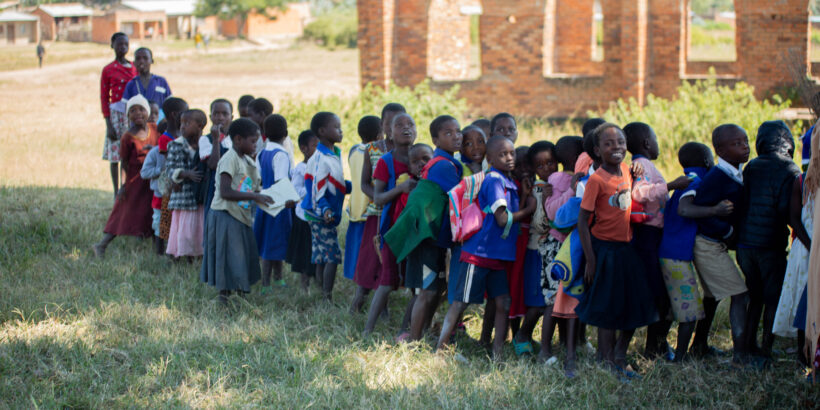Health economic analyses provide useful information when making decisions about introducing a new public health intervention like vaccines. The cost of a vaccination program, cost-effectiveness of vaccine introduction, and health care costs averted through disease prevention are all useful when policymakers decide how to allocate limited funds. We spoke with Frédéric Debellut, Senior Health Economist at PATH and lead author of a new study to understand the cost to deliver typhoid conjugate vaccine (TCV) in Malawi.
Q: What are cost of delivery studies, and why are they useful for decision-makers?
A: Cost of delivery studies are health economic studies that evaluate all the resources used to deliver an intervention and their associated cost. Our study looked at the cost of an integrated immunization campaign in Malawi. In 2023, Malawi introduced TCV in an integrated campaign that also provided measles-rubella vaccine, oral polio vaccine, and vitamin A supplementation. We don’t currently have a lot of evidence on the cost of immunization campaigns and there is even less on integrated immunization campaigns. Previous studies on the cost to deliver TCV were not based on nationwide introductions. This information can be very useful in budgeting for future immunization campaigns, ensuring sustainability of a vaccine program, and can provide a benchmark cost for other countries considering similar interventions.
Q: Tell me about the Malawi cost of delivery study you conducted.
A: Our goal with this study was to generate evidence on the cost to introduce and deliver TCV. This study can inform policymakers in Malawi about immunization budgeting and provide data for other countries in the region considering TCV introduction. We retrospectively assessed the cost to deliver TCV through the integrated campaign and estimated the cost to deliver TCV through routine immunization. We collected data on resources used by the routine immunization program and number of doses delivered for each intervention during the campaign and for each vaccine separately in the routine immunization program. Additionally, we collected costs for immunization campaign activities, such as training, social mobilization, record keeping, and waste management. We randomly selected a total of 50 health facilities from 10 different districts to cover different geographies across Malawi and at the national level.
Q: What did the results show?
A: Overall, the cost per dose delivered in the integrated campaign in Malawi was comparable with other integrated campaigns and was lower than the reported cost to deliver TCV in single antigen campaigns in Navi Mumbai, India, and during outbreak response in Zimbabwe. When combining cost per dose at the different levels, the overall financial cost per TCV dose in the integrated campaign was $0.49 and the overall economic cost per dose was $0.84. Financial costs are what was actually spent at the time of the campaign. Economic costs capture a broader perspective, including the opportunity cost of resources used for the campaign that would have otherwise served another purpose, for example vaccinator salaries. The financial and economic cost to routinely deliver a dose of TCV were estimated at $0.44, and $2.37, respectively.
Our analysis tends to show that the cost per dose to deliver TCV in an integrated campaign was likely lower than if it had been delivered in a standalone campaign. Integrated campaigns may represent an opportunity to introduce new vaccines such as TCV to lower the cost per dose delivered, yet attention should be given to challenges with integration, such as the burden for health care workers and intensified planning requirements.
Q: What do these data mean for decision-makers?
A: Decision-makers have an increasing number of new vaccines available to consider for introduction. Integrated campaigns are an opportunity to offer vaccines against different diseases at the same time and avoid repeated large-scale efforts. Our analysis suggests that in Malawi, this approach cost less than conducting multiple separate, standalone campaigns. Additionally, integrated campaigns can help reach zero dose or underimmunized children, providing multiple interventions at once in hard-to-reach areas. This is especially important as countries are facing Gavi graduation and will need to finance their immunization programs on their own. These data provide useful cost information for countries considering integrated campaigns in the future.
Photo: School children wait to receive their vaccines during Malawi’s integrated TCV campaign. Credit: TyVAC/Madalitso Mvula.



